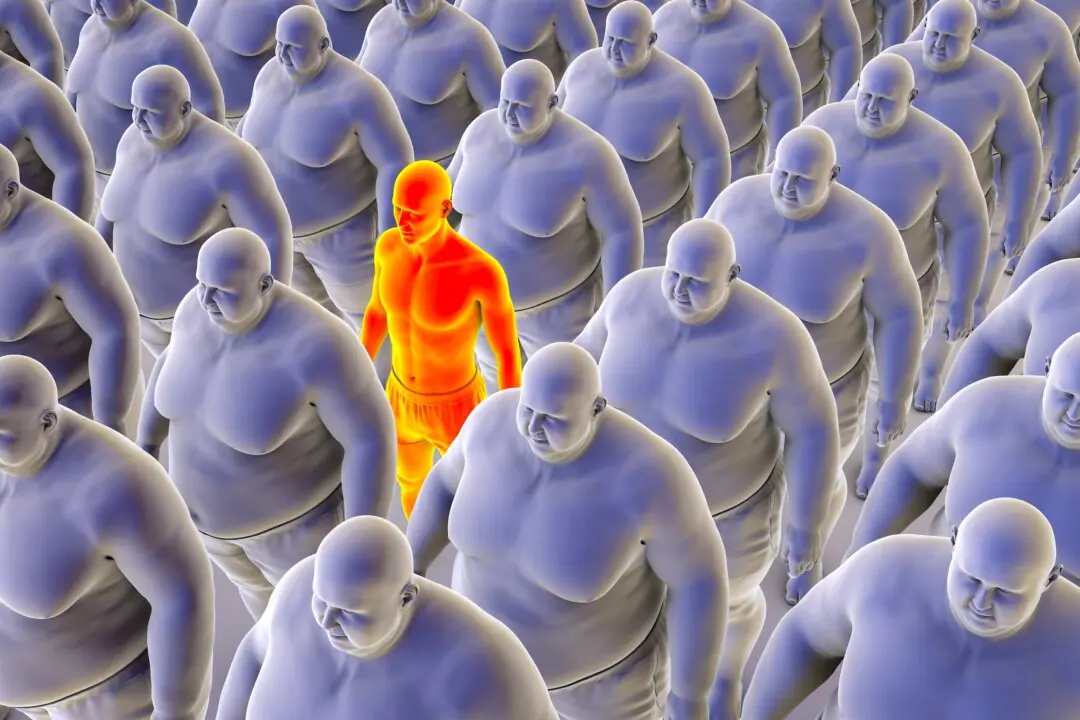Consumption has increased from one-one-hundredth of total calories to more than one-fourth of total calories—yet while most experts blame the epidemic of chronic disease on sugar, it’s relatively minor when you compare it to this.
STORY AT-A-GLANCE
- Fats are the primary building block of your cell membranes. This is one of the reasons why eating the right types of fat is so important for your health and longevity.
- While most nutritional experts blame the epidemic of chronic disease on the increase in sugar consumption, the role of sugar is relatively minor when compared to the impact of seed oils.
- There are two basic types of fatty acids, based on how many of their carbon bonds are paired with hydrogen: saturated fats and unsaturated fats. Unsaturated fats are further subdivided into monounsaturated fats and polyunsaturated fats (PUFAs), depending on how many pairs of hydrogen atoms they are missing.
- Because your tissues are made up mostly of saturated and monounsaturated fats, your body requires more of them than PUFAs.
- The main dietary PUFAs are omega-3 and omega-6 fats, and while your body does need these, it needs them in relatively small quantities. The most pernicious toxin in the modern diet, and the fat you need to minimize consumption of, is the omega-6 fat linoleic acid (LA). LA makes up 60 percent to 80 percent of omega-6 fats and is the primary contributor to chronic disease.
Fatty Acid Basics
There are two basic types of fatty acids, based on how many of their carbon bonds are paired with hydrogen:2- Short-chain fatty acids (SCFAs): Two to four carbon atoms.
- Medium-chain fatty acids (MCFAs): Six to 10 carbon atoms.
- Long-chain fatty acids (LCFAs): 12 to 26 carbon atoms.
- Very-long-chain fatty acids4 (VLCFAs): 26 to 30 carbon atoms.
Omega-3 and Omega-6 Basics
PUFAs can also be subdivided into omega-3 and omega-6 fats. The end of the fatty acid chain that is opposite the acid end is the “omega end.” The location of the first double bond from the omega end dictates whether a fatty acid is an omega-3, omega-6, omega-9 (oleic acid), or another member of the omega family.
To be clear, it’s only toxic when consumed in excessive quantities, but the vast majority of people nowadays consume far more than the ideal amounts. The history of how seed oils ended up replacing far healthier animal fats is detailed in the video above.
Many still believe that if you have a distorted omega-3 to omega-6 ratio, the solution is simply to consume more omega-3, but that’s a serious mistake. While you certainly need a certain amount of omega-3s for good health, adding excessive omega-3s is a prescription for disaster, as omega-3 is also a PUFA.
Commonly Confused Fats
It is also important to highlight a primarily plant-based omega-3 fat called alpha linolenic acid (ALA). ALA should not be confused with LA, as they are quite different from a biological standpoint. LA is an omega-6 fat and ALA is an omega-3 fat.The Problem With PUFAs
As a general rule, vegetable and seed oils are high in PUFAs and low in saturated fats while animal fats are the converse. Saturated and monounsaturated fats are more easily used by your body than PUFAs, hence animal fats are generally healthier than seed oils.One significant problem with PUFAs is that they are chemically unstable, which makes them highly susceptible to being damaged by oxygen species generated from the energy production in your cells. This damage causes them to form ALEs, which in turn generate dangerous free radicals that damage your cell membranes, mitochondria, proteins, and DNA.
LA Is Not an ‘Essential’ Fat
“Essential fatty acids” (EFAs) is a term referring to the PUFAs that scientists believe are crucial for health and that your body cannot produce. Hence, you have to get them from your diet. Currently only two types of fats are considered “essential”:- Omega-3 (EPA, DHA, and ALA)
- Omega-6 fat (LA)
Research has also shown that when you have a large amount of LA in your diet, an enzyme called delta-desaturase—which converts the plant-based omega-3 fat, ALA, to the long-chain fats DHA and EPA—is inhibited. So, consuming high amounts of LA increases your dependence on sea food as a source of preformed EPA and DHA.
The Evidence Why LA Is Not an ‘Essential’ Fat
However, the first demonstration of essential requirement for LA in animal diets was in 1929–30. Rats receiving the nearly unachievable outside of a lab, 0.5 percent of their total dietary calories as LA were 30 percent higher in body weight compared to total fat deficient rats and did not develop skin lesions and tail necrosis.7,8This calls into question how “essential” LA really is in the human diet, especially since, outside of a research lab or parenteral nutrition, it is virtually impossible to avoid getting enough LA to meet physiological needs. Currently, most adults are consuming far more than recommended amounts of LA.
Seed Oils Are the Root of All Chronic Diseases
The video above reviews the health risks associated with vegetable oils and seed oils, which are found in most processed foods. It shows how chronic diseases such as heart disease began to skyrocket after the introduction of these oils to the market.
Before 1866, the Western world for the most part only consumed animal fats. Tallow, suet, lard, and butter are examples of these fats. Eastern societies used cold-pressed fats like coconut and palm oil. Vegetable oils like we know them today simply did not exist.
Seed Oils Are Far Worse Than Sugar
While most nutritional experts blame the epidemic of chronic disease on the increase in sugar consumption, the role of sugar is relatively minor when compared to the impact of seed oils.

How Excess LA Consumption Can Wreck Your Health
The main reason why excess LA causes disease is that it prevents your mitochondria from working well. Mitochondria are subcellular organelles responsible for producing most of your cellular energy in the form of ATP, and without ATP, your cells cannot function and repair themselves normally.These ALEs and OXLAMs then go on to cause mitochondrial dysfunction, which is a hallmark of most all chronic disease. In addition to oxidation, inflammation, and mitochondrial dysfunction, processed seed oils can also:

The Importance of Cardiolipin
The inhibition of cardiolipin in the inner membrane of your mitochondria explains much of the damage caused by LA. You have about 40 quadrillion to 100 quadrillion mitochondria throughout the cells of your body. The cristae of the inner membrane of the mitochondria contains a fat called cardiolipin,28 and its function is dependent on the type of fat you get from your diet.Cardiolipin is important because it influences the structure of the cristae inside your mitochondria, which is the area where energy production occurs. If cardiolipin is damaged, then the complexes will not be close enough together to form supercomplexes and thus the mitochondrial energy production will be impaired.
Cardiolipin also works like a cellular alarm system that triggers apoptosis (cell death) by signaling caspase-3 when something goes wrong with the cell. If the cardiolipin is damaged from oxidative stress due to having too much LA, it cannot signal caspase-3, and hence apoptosis does not occur.
As a result, dysfunctional cells are allowed to continue to grow, which can turn into a cancerous cell. The type of dietary fat that promotes healthy cardiolipin is omega-3 fat, and the type that destroys it is omega-6, especially LA.
The image below illustrates a typical mitochondria on the left. Figure C shows how the folds cause cardiolipin to provide the curve in the mitochondrial cristae. The folding causes the super complexes in the electron transport chain to get closer together and more efficiently transfer electrons to produce ATP.

LA Contributes to Heart Disease and Cancer
Heart disease and cancer are two of the primary killers in the Western world, and LA is a significant contributor to both of these lethal conditions. One of the first things that happens in atherosclerosis, which is the precursor to heart disease, is that your macrophages (a type of white blood cell) turn into foam cells—essentially a macrophage stuffed with fat and cholesterol.Atherosclerotic plaque is basically dead macrophages and other types of cells loaded with cholesterol and fat. This is why heart disease is blamed on saturated fat and cholesterol. However, researchers have found that for foam cells to form, the LDL (low density lipoprotein cholesterol) must be oxidized, and that is precisely what seed oils do.
Seed oils are also a major contributor to cancer. In fact, a surefire way to induce cancer in many animal models is to feed them seed oils. Animals typically develop cancer once the LA in their diet reaches 4 percent to 10 percent of their energy intake.
And, as mentioned, most Americans get approximately 25 percent of their total daily calories from seed oils, so we’re far over the safety threshold for these fats—at least based on the laboratory work in animals. Remember our ancestors typically got less than 2 percent of their calories in the form of omega-6.
What Foods to Avoid, and How
Primary sources of LA include seed oils used in cooking, processed foods, and restaurant foods made with seed oils, condiments, seeds and nuts, most olive oils and avocado oils (due to the high prevalence of adulteration with cheaper seed oils), and animal foods raised on grains such as conventional chicken and pork.Cronometer will tell you how much omega-6 you’re getting from your food down to the tenth of a gram, and you can assume 90 percent of that is LA. Anything over 10 grams of LA is likely to cause problems. Healthy fat replacements include tallow, butter, or ghee, all of which are excellent for cooking.

Vast Majority of Olive Oil and Avocado Oil Are Adulterated
Most people introduced to the topic of omega-6 toxicity have questions about olive oil and avocado oil. Consumption of olive oil has increased more than 10-fold in the United States over the past 35 years.39 Olives and olive oil are well-known for their many health benefits, especially for your heart, but using adulterated olive oil will not do your health any favors.This is even true for “extra virgin” olive oil. Cheap seed oils are added and will not be listed on the label, nor will most people be able to discern that their olive oil is not 100 percent pure. Chances are, you’ve been eating poor-quality olive oil so long—or you’ve never tasted a pure, high-quality olive oil to begin with—you don’t even realize there’s something wrong with it.
In general, people believe the U.S. Food and Drug Administration (FDA)is policing and regulating food fraud, but that’s not the case. Its primary focuses are making sure the ingredient label is accurate and tracking food-related disease outbreaks.
Go Easy on the Nuts and Seeds
Most people who are interested in health believe that nuts and seeds are “heart healthy” staples.42 However, as you can see in the table below, most nuts and seeds are exceedingly high in LA. For example, 50 percent of the fat in pecans is LA.43 The only exception is macadamia nuts.So, while nuts and seeds are often unprocessed and are the best type of omega-6 fats to eat, they will still contribute to the LA content of your diet, and once you hit 5 grams of LA per day, the perishable double bonds will begin to oxidize and generate dangerous free radicals that lead to health problems.
So, nuts and seeds need to be significantly minimized or even eliminated if you want to lower your LA. As mentioned, the exception to this rule is macadamia. Since only 2 percent of their fat is LA, you can have 10 to 30 a day without significantly raising your LA level.

LA in Animal Foods
While seed oils are a primary source of LA, a number of animal foods you might not suspect are also loaded with this harmful fat. Ruminant animals such as cows, buffalo, sheep, lamb, goats, deer, elk and many other game animals have low LA content in their milk and meat, no matter what they eat, thanks to the fact that they have multiple stomachs with bacteria that can convert the high LA fat they eat into saturated and monounsaturated fats.Interestingly, the difference in LA in ruminants that are 100 percent grass-fed and those that are fed corn and soy is only about 0.5 percent, which is why, from an LA perspective, there isn’t much difference between conventional beef and grass fed-only beef. That said, grass fed beef is still preferred as it typically has less glyphosate and hormones.
LA in Seafood
Ideally, you'd get your omega-3s from healthy seafood. However, not all seafoods contain omega-3s. Only fatty, cold-water fish do. Examples include wild-caught Alaskan salmon, sardines, anchovies, mackerel, and herring.Farmed fish, especially farmed salmon, is best avoided altogether due to the exaggerated potential for contamination. At first glance, farmed fish may seem like a good idea to help protect wild seafood populations from overfishing, but in reality, the industry is plagued with many of the same problems surrounding land-based concentrated animal feeding operations (CAFOs), including pollution, disease, toxicity, and inferior nutritional quality.
Most farmed fish are fed genetically engineered corn and soy, which are a completely unnatural diet for marine life and are loaded with hazardous omega-6 fats. Others are fed fishmeal, which is known to accumulate industrial chemicals like PCBs and dioxins.
Carnosine Can Help Reduce LA-Induced Oxidative Damage
While your body will slowly eliminate stored LA over time, provided you reduce your intake, a peptide supplement called carnosine can help reduce the oxidative damage caused by LA while your body is cleaning itself out.Carnosine is a dipeptide your body makes and it consists of two amino acids, beta-alanine and histidine. It serves as a sacrificial sink for reactive oxygen species and ALEs, meaning it lets these very damaging molecules destroy it rather than your mitochondria, DNA or proteins, as depicted in the image below.

Summary
Do yourself and your family a favor and embark on a journey of eliminating all seed oils from your diet today to ward off virtually all chronic degenerative diseases. This means avoiding all seed oils, and even fruit oils like olive oil and avocado oils as they are frequently adulterated with cheap seed oils.Cook with ghee, butter, or beef tallow, and avoid all processed foods, as they are typically loaded with seed oils. Also avoid eating in restaurants, as nearly all use massive amounts of seed oils to cook with and put it in their sauces and dressings. Lastly, avoid chicken and pork, and stick to bison and lamb as your primary meat sources.
◇ References:





